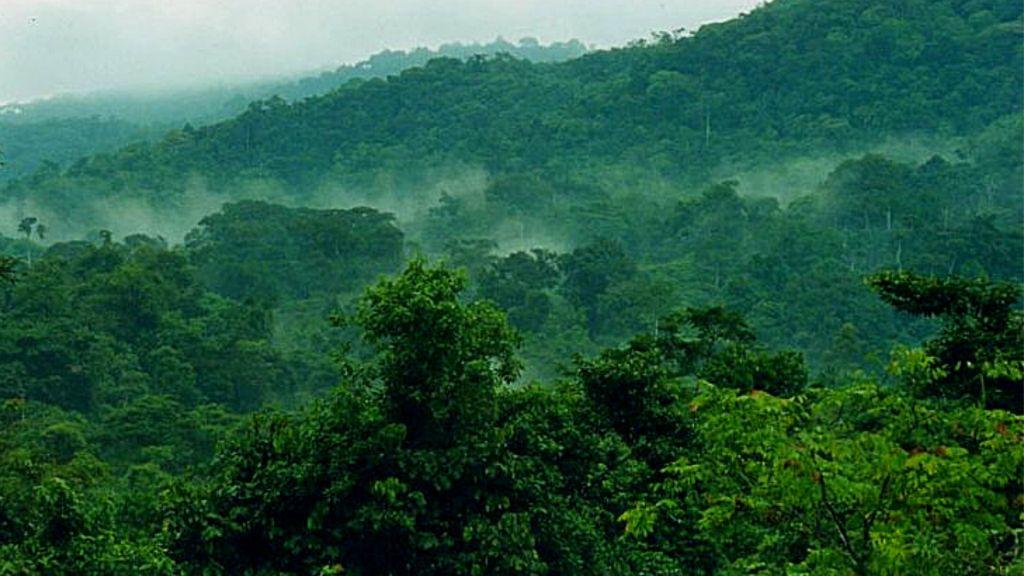Climate of Bwindi Gorilla National Park lies astride the equator making it pleasantly warm and tropical climate with insignificant seasonal variations, making it good to visit all year round. Bwindi Impenetrable forest is bordered by Volcanoes National Park -Rwanda in the south and Virunga National Park the Democratic Republic of Congo in the west. Bwindi Gorilla National Park is in the strategic location of Uganda crossed by the equator and the beautiful Lake Victoria which has modified equatorial climate making it with two rainy seasons and dry seasons. The best time to see gorillas in Uganda is known as a whole round travel destination in East Africa to any tourist planning to visit Bwindi and Uganda at large.
The Average temperatures of Bwindi forests range from a minimum of 7°C -20°C to a maximum of 20-27°C. Bwindi National Park receives up to 2390mm of rain each year. It can get really cold especially in the mornings and at night. Warm clothing is therefore a requirement when planning a gorilla trekking tour. The peak of the rainy season happens from March to April and from September all through in to November. The altitude varies from 1160m to 2607m above sea level, which results in variations in temperature.
The Climate of Bwindi Gorilla National Park has two variation season which makes it the best place to visit all year round; the dry season and wet season make the gorilla park an ideal place to visit during your adventure holiday in Uganda. The dry seasons are the best time to do gorilla trekking in Bwindi forest, from June, July, August-Mid September and December to February this is the best month to visit Bwindi Gorilla National Park. BOOK NOW

Bwindi Forests in Uganda
During the dry season, it is a fantastic time for both gorilla trekking and game safari in Uganda. The dry ground underfoot makes walking easy and despite being the dry season of the year, gorilla trekking in Bwindi forest can be comfortable due to the altitude providing cooler temperatures. As Bwindi’s climate is tropical it is possible that there will be some rainfall, but these are unlikely to affect your game activities, and gorilla treks will still be undertaken. Uganda’s equatorial temperatures generally range from 17-28C throughout the year but figures in the mountainous regions and during the evenings may drop to around 13C.
The dry season means that all Uganda National Parks are accessible enabling you to witness everything that this amazing country has to offer. Meaning that dry season is the peak season, prices will be higher and gorilla permits will need to be booked well in advance like 4 months ago. However, one of the benefits of Uganda, as opposed to some other African destinations, is that the parks rarely feel busy or overcrowded allowing you intimate wildlife encounters and unforgettable experiences. Some hotels and lodges near Bwindi National Park and Mgahinga Gorilla National Park attraction place may fill up fast during the peak season so book early secure your space at your preferred accommodation.
Visiting Uganda in dry season gives you the best sight of wildlife in Murchison Falls National Park and such animals are easy to see including elephants, lions, leopard, buffalo, and so on. During this season, all of the country’s National Parks are at their best at this time, so travel to Queen Elizabeth National Park to see four of the big five and then on to Mgahinga Gorilla National Park to track gorillas. This is a truly awe-inspiring experience and being able to do it at a time when the weather is at its peak is even better.
The wet season from March, April, May, and September, October and November
During this wet season, Bwindi Gorilla National Park tends to have much rain throughout the Park. However, this does not mean that gorilla trekking can’t take place in Bwindi National Park. The wet season rainfall is unlikely to perpetuate throughout the day and skies will brighten up after a downpour. Therefore you will still have plenty of time to explore and relax during your safari.
The long rains of March and April continue into May so this month is not considered the best time to travel. However, if you’re not too worried about experiencing some rain during your trip it can be a lovely time to explore Uganda Landscapes will be lush and verdant after months of rain which may make wildlife more difficult to see, but the vegetation will create stunning backdrops for photography.
November sees the start of the best bird-watching season (November-April) as migratory birds arrive. Uganda is known for over 1100 bird species so if this is something that you are particularly interested in, please do tell your guides and they will be able to point out some unique species. The climate at Murchison Falls is steady year-round so a visit to see the Nile and the impressive falls is a great add on your safari.
